CentOS 8 reached end-of-life (EOL) in December 2021, forcing millions of sysadmins to rethink OS strategies for servers and virtual machines. Those not on board with "upgrading" to the new CentOS Stream (Red Hat's rolling release platform that's not a good option for a production server) have two choices: run the EOL version of the OS or look for CentOS alternatives.
This article presents 8 CentOS alternatives that provide similar features and stability as CentOS but have no planned EOL in sight. Staying in the true tradition of CentOS, all Linux distros on this list are free to install and use (although some require a paid subscription for enterprise-grade support).
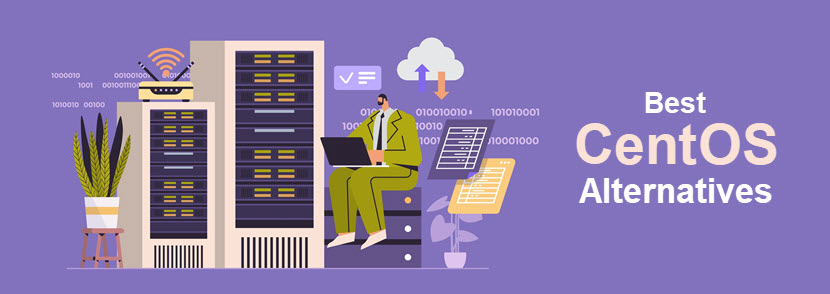
While CentOS 8 reached premature EOL, CentOS 7 will have support until June 30, 2024. If you're running servers on CentOS 7, you still have time to find a suitable replacement.
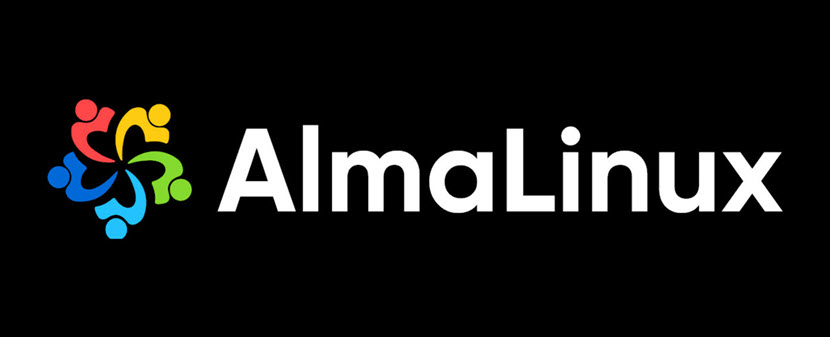
1. AlmaLinux
AlmaLinux (previously known as Project Lenix) is an open-source server operating system from CloudLinux. This distro's first stable release was in March 2021, and the publisher guarantees full support until 2029.
AlmaLinux is a 1:1 binary-compatible fork of Red Hat Enterprise Linux 8 (RHEL) and pre-Stream CentOS. The distro also supports cPanel and Control Web Panel (formerly known as CentOS Web Panel), so most CentOS users will feel at home with this OS. While AlmaLinux is free to install and use, there is a required subscription fee for enterprise-grade support.
AlmaLinux is primarily an enterprise operating system and aims at organizations looking for a stable, robust platform. The distro performs great with all CentOS-based server environments and workloads (in physical, virtual, and cloud computing environments).
Main reasons to choose AlmaLinux:
- Free to install and use (CloudLinux guarantees that Alma will stay free, following in the footsteps of CentOS).
- Developed and supported by the highly experienced CloudLinux (which sets aside $1M annually for the distro).
- Has the backing of a constantly growing community, as well as some industry giants (such as Microsoft, AWS, ARM, Open Source Lab, cPanel, CHEF, Pleak, Mattermost, etc.).
- An emphasis on ease of use, both in terms of installation and server management.
- Very familiar to former CentOS users (the OS even defaults to the GNOME desktop).
- Simple transition from all RHEL derivatives thanks to a migration script that enables users to convert server fleets with a single command.
The publisher of AlmaLinux also offers a paid version of the distro called CloudLinux OS. This RHEL-derived platform offers advanced features primarily intended for large data centers, so most companies will do just fine with AlmaLinux.

2. Rocky Linux
Rocky Linux is a free server-oriented Linux distro developed by Gregory Kurtzer, one of CentOS's original founders. The first stable release of Rocky was in June 2021, and the distro will have support until 2029 (at the minimum).
Rocky Linux functions as a downstream rebuild of RHEL 8 (just like CentOS), building releases after the upstream vendor adds them. Like AlmaLinux, Rocky is a 100% bug-for-bug compatible fork of Red Hat Enterprise Linux 8. The distro works excellently as a server since Rocky uses the RHEL stable source code to power production workloads.
Rocky Linux's community is growing daily, and many users loyal to CentOS are gathering around the new distro. Several industry giants (including Google and Amazon) are also buying in, which promises great things ahead for Rocky Linux.
Rocky Linux is considered by many as the best alternative to CentOS. Just like CentOS of the old days, it offers an open-source and reliable server operating system for production environments. However, it is too early to tell whether the industry is going to mass adopt Rocky Linux.
Main reasons to choose Rocky Linux:
- A free, open-source Linux distro with a true community-first approach.
- Developed by one of the original co-founders of the CentOS project.
- The OS is highly stable, with regular updates and a 10-year support lifecycle.
- A low learning curve if you already know how to use CentOS.
- Migrating from other distributions is simple with an easy-to-use migration script.
- Integrated enterprise, hyperscale, cloud, and high-performance computing functions.
Kurtzer named Rocky Linux after Jason Dale "Rocky" McGaugh, another CentOS co-founder who, unfortunately, passed away in December 2004 before CentOS grew into one of the most popular Linux distros in the world.

3. Ubuntu
Ubuntu is another free Linux distribution, but unlike the relatively young Alma and Rocky, this one has been on the market since October 2004. Almost twenty years of existence makes Ubuntu the go-to choice for anyone wary of less mature distros. The publisher (Canonical) will keep this distro under a public license until 2025 (with a commercial option to extend to 2030).
Ubuntu needs no real introduction to development and DevOps teams—recent studies reveal that 66% of experienced engineers prefer Ubuntu over other Linux distros (CentOS was the second). There are three different editions of Ubuntu, each adapted to specific user and IT needs:
- Ubuntu Desktop (the standard version of the Debian derivative with a Unity interface).
- Ubuntu Server (a server environment package with a classic command line interface).
- Ubuntu Cloud (currently the most popular platform for building a public cloud).
Ubuntu is not an RPM-based Linux distribution but comes from the Debian Linux "family tree." To set up RPM packages on Ubuntu, you must use Alien to convert the package into a DEB file, which is not as seamless of a transition as you'll find in AlmaLinux and Rocky Linux. You'll also face several new networking and management components if you are coming from the RHEL domain.
Main reasons to choose Ubuntu:
- A free, well-established OS with a vast and loyal community.
- Highly stable, customizable, and user-friendly.
- An abundance of online tutorials and guides.
- Over 30,000 open-source packages (such as those for Ruby, Go, Java, Apache, Nginx, PostgreSQL, MySQL, Node.js, PHP, and more.)
- Reliable release schedule (Canonical publishes new releases of Ubuntu on a regular cadence, enabling users to plan roadmaps reliably).
- Works the same wherever you set it up (on workstations, in the server room, on the edge, and in the cloud).
Check out our article on CentOS vs Ubuntu for an in-depth look at how the two OSes stack up against each other.
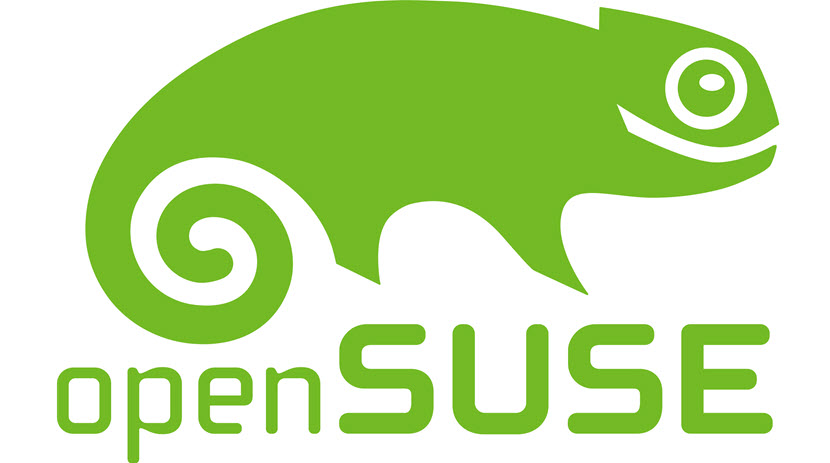
4. OpenSUSE
OpenSUSE is another worthwhile option among CentOS alternatives for servers, clouds, and desktops. Sponsored by SUSE Software Solutions GmbH, this open-source distro (which initially hit the market in 2005) comes in two formats:
- The LTS-style release Leap.
- The rolling release Tumbleweed.
The Leap version is considerably more stable, which makes it the go-to option if you're looking for a CentOS replacement. Several advantages make this distro an attractive option (especially for a dev team):
- Binary compatibility with SLES: The publisher has been basing Leap on the SUSE Linux Enterprise Server (SLES) packages since 2021 (version 15.3).
- High stability and security: The OS's stable base is one of the main reasons openSUSE Leap has gained so much popularity.
- YaST: YaST (which stands for "Yet another Setup Tool," in the spirit of original YAML's "Yet Another Markup Language") is a native tool of Leap that drastically speeds up server management tasks.
While OpenSUSE Leap is suitable for enterprise needs, the free version of the distro does not include full support.
Main reasons to choose OpenSUSE:
- An emphasis on stability and "evergreen" support.
- Very user-friendly and with a backing of a highly dedicated community.
- An excellent fit for experienced development teams.
- Wide selection of community-developed open-source tools (Open Build Service (OBS), openQA, YaST, Kiwi, etc.), plus the distro includes various pre-installed apps.
- The publisher has a strong track record for responding quickly to security problems and providing top-notch server security upgrades.
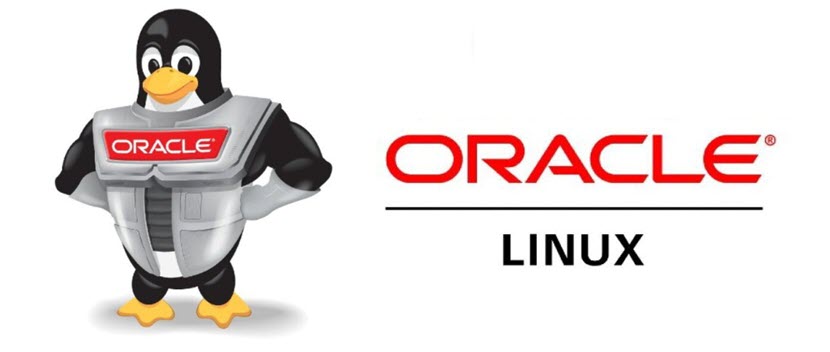
5. Oracle Linux
Oracle Linux is an RHEL fork that allows users to migrate from CentOS with a reinstallation-free conversion script (works for CentOS 8, 7, and 6). The script has two functions (both of which it performs without requiring a server restart):
- Switching YUM configuration to the Oracle Linux YUM server to update core packages.
- Installing the latest Oracle Unbreakable Enterprise Kernel (UEK), which closely follows the RHEL release cycle.
Oracle Linux is 100% binary compatible with RHEL and has been on the market since 2006. The distro is completely compatible with existing apps on a CentOS server, plus you get access to two cutting-edge innovations in Linux:
- Ksplice, which allows you to patch a running kernel without requiring a system reboot.
- Dtrace, which offers greater visibility into active programs and the operating system.
Oracle Linux's source code, binaries, and updates are free, but support is not (even though it's cheaper than what Red Hat asked for CentOS support). Also, cPanel does not support this distro, which is a dealbreaker for some teams and use cases.
Main reasons to choose Oracle Linux:
- Has been free to download and use since 2006.
- Excellent choice for cloud-native development.
- One of the most stable and best-performing CentOS alternatives.
- Strong support for hybrid and multi-cloud environments.
- Tight integration with Oracle hardware and software products.

6. Debian
Debian is one of the oldest and most reliable Linux kernel-based operating systems. This community-driven distro does not provide the same level of transition simplicity as other CentOS alternatives, so having a more experienced team is advisable if you opt for Debian.
Debian offers stable packages and an extended support window with Long Term Support (LTS) until each version's end-of-life. The distro is also conservative on upgrading Linux Kernel versions and packages, a trait that makes Debian one of the most stable, surprise-free options for a production server.
Main reasons to choose Debian:
- Open-source and 100% free.
- A co-produced community project with developers in more than 60 countries.
- A time-tested Linux distro with a lot of online resources and guides.
- A wide range of software selection and architecture support.
- Arguably the most stable Linux distro on the market.
- A track record of effective and timely security updates.
Unsure whether to go with Ubuntu or "vanilla" Debian? No worries—our Debian vs Ubuntu article will break the tie.

7. VzLinux
VzLinux is another open-source CentOS clone that's been around for over two decades. This distro is the base operating system for OpenVz and other products from Virtuozzo, a company that specializes in virtualization.
This server distro is 1:1 binary compatible with RHEL 8 and is available for free on its official website. There are three versions of VzLinux, each optimized for running in a different infrastructure, including:
- High-density system containers.
- Virtual environments.
- Bare metal.
VzLinux shines in cloud-native and container environments due to several helpful features, such as:
- Conversion dry-run.
- Snapshot creation and roll-back.
- Unattended mass conversion.
Virtuozzo offers a ready-to-use utility (vzdeploy8) to convert from CentOS 8 to VzLinux, a process that upgrades a server without causing downtime. VzLinux is also available as a Docker container image, which you pull with the command docker pull virtuozzo/vzlinux8.
Main reasons to choose VzLinux:
- A free multi-purpose distro optimized to run great in containers, VMs, and bare-metal servers.
- Published by a company that is a contributor to various open-source projects (KVM, Docker, OpenStack, OpenVZ, CRIU, Linux kernel, etc.).
- Excellent choice for running containers.
- Supported as a guest OS under different hypervisors (Virtuozzo, OpenVZ, and KVM).
- Seamless transition from CentOS 7 and 8.
- Support for I/O-intensive apps and workloads.
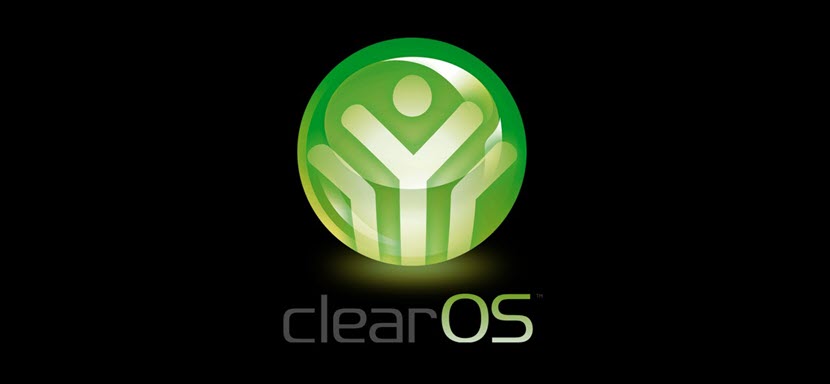
8. ClearOS
ClearOS (formerly known as ClarkConnect) is a CentOS and RHEL-based server operating system by ClearFoundation. This open-source distro's primary focus is not on web server environments but internal network servers and gateways.
ClearOS comes pre-installed on the ProLiant server line, and the company offers a free Community version. The free edition includes open-source updates and patches from upstream sources, but companies must opt for a paid subscription (Home or Business Edition) to improve services and support.
Main reasons to choose ClearOS:
- A free distro that's easy to get into, set up, and use.
- A great option for internal network servers (especially for startups and SMBs working on a budget).
- Offers a robust set of tools and an easy-to-navigate interface.
- Has a ClearOS Marketplace with hundreds of out-of-the-box services and features.
Do none of these distros look like a good fit for your server? Perhaps you should consider cutting ties with Linux-based systems—our article on Linux vs Microsoft servers offers a detailed breakdown of what the two OSes offer to a hosting environment.
What CentOS Alternatives Should You Go For?
In terms of potential, no CentOS alternatives are more promising than AlmaLinux, created by the experienced CloudLinux, and Rocky Linux, made by one of the original CentOS founders.
Chances are one of those two will grow into a true CentOS spiritual successor in the coming years, an opinion shared by some of the industry's biggest names. Google is already putting its weight behind Rocky, Microsoft has been working closely with AlmaLinux, and Amazon is actively supporting both distros.
However, if the relative "youth" of AlmaLinux and Rocky is a concern, you'd likely be more comfortable with a better-established OS. Look at Ubuntu, Debian, or Oracle Linux if you want a distro with more mileage and better documentation. OpenSUSE Leap and VzLinux are great choices if you're looking for a compromise between longevity and Cent-OS familiarity.
CentOS 8 EOL Is Bad News, but You Have Options
While no one is happy to see the popular OS go, there are more than enough CentOS alternatives to fill the gap. Just don't let the selection process drag out too long—companies must make a quick rehosting decision to avoid issues of unpatched CentOS 8 deployments. Running an expired OS is risky, so weigh your options carefully and choose a distro that best fits your use case and IT needs.



